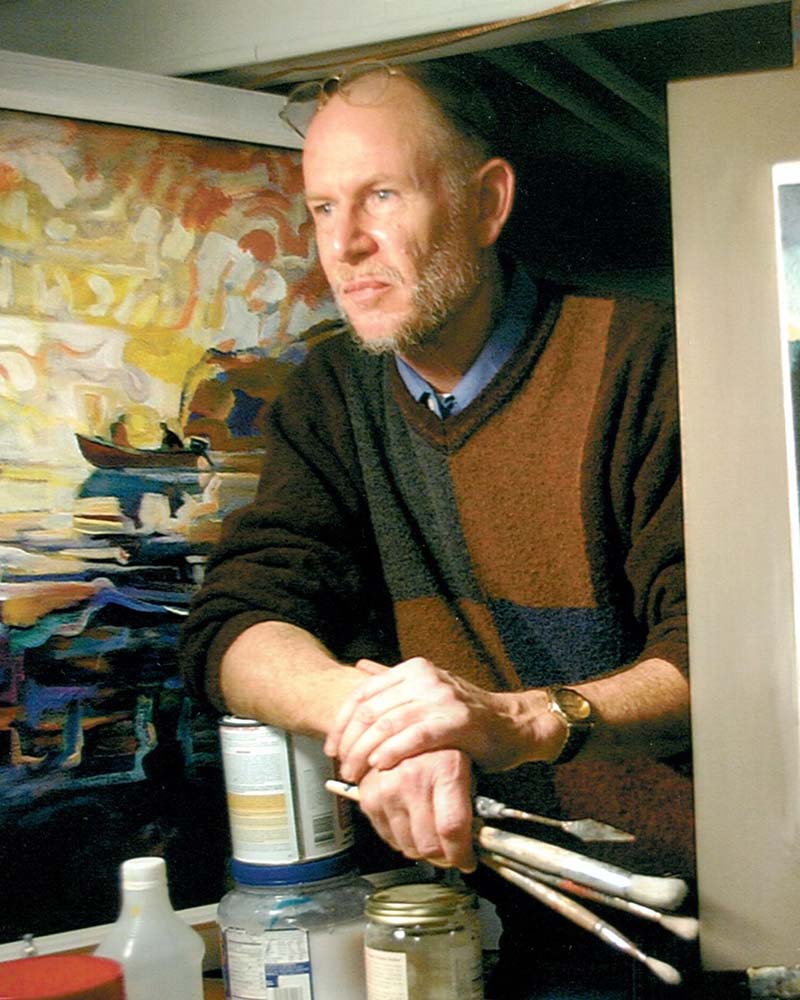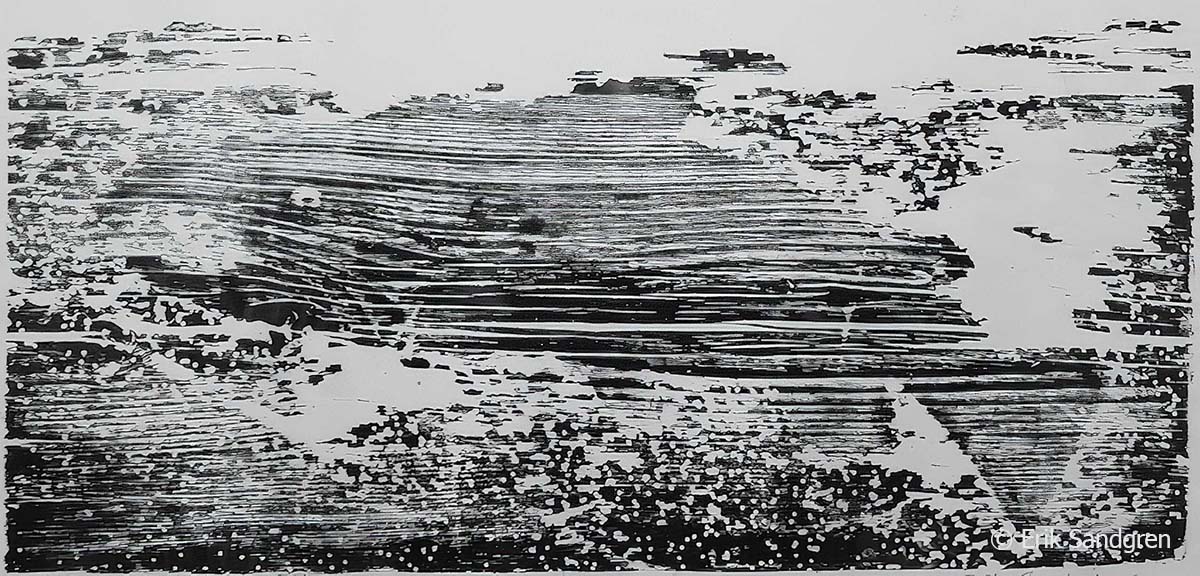 Erik Sandgren is a Northwest Artists Against Extinction collaborating artist whose work has been in relationship with Pacific Northwest visual arts culture. The mountains, skies, water, trees, and the people of the region have provided inspiration for his works which resonate with themes of location, memory, and myth.
Erik Sandgren is a Northwest Artists Against Extinction collaborating artist whose work has been in relationship with Pacific Northwest visual arts culture. The mountains, skies, water, trees, and the people of the region have provided inspiration for his works which resonate with themes of location, memory, and myth.
Erik shares his thoughts about his work and how it demonstrates the intersectionality of place and ecological issues in this interview.
Jeanne Dodds: Your work is informed by the Northwest sense of place identity, and the myths and stories that have informed the visual arts culture of the region. Can you talk a bit about ways that this regional identity shows up in your work?
Erik Sandgren: I grew up here in the Pacific Northwest and returned to it as a mature painter in 1989. There is a particular flavor to the way humans have interacted with this landscape over millennia. The anadromous* fish are a big and exciting part of that changing reality.
JD: Salmon are a species closely interwoven with Indigenous and settler-colonial Northwest culture. They are identifiers of community, systems ecology, biology and place making. How do the salmon and their central role in the region inform and inspire your creative practice?
ES: Salmon are watershed specific and, before the hatchery industry, more individuated genetically than the people who catch them. What is most exciting to me is how they leave and come back, bringing the energy and nutrients from the ocean back to the deep interior of the continent.
JD: You work in a range of media, from oils to woodblock prints. Can you tell us more about the range of materials you use to produce your imagery, and why you choose certain media to represent a given subject?
ES: I feel the material of the woodcut, cut as it is by steel, to be particularly appropriate to the subject - roughly analogous to the steel of hook , gaff and net ring securing the flesh of the fish. My woodcuts of the last years though, mostly start as paintings to work out the big compositional patterns of that more rigid medium. Whatever the medium I’m trying for some lifelike sense of the rhythm and flow of the pictorial space.
JD: How does the urgent need to conserve and restore salmon, including taking actions like the removal of the four Lower Snake River dams to support salmon recovery, influence your work?
ES: The urgency of that is, in a nutshell, the poster child for every violation of the natural world that contemporary culture has carried too far.
JD: We've spoken about the unique role artists play as culture creators and cultural agents. Can you please talk about how you see artists engaging in the issue of salmon conservation, and biodiversity conservation broadly, and why artists' perspectives are significant?
ES: I think artists can inspire people to a renewed appreciation of the fragility , ephemerality and beauty of nature’s dynamics. How they react from there as consumers, voters, advocates, investors and activists is up to them.
JD: What do you hope audiences observing your work understand about the Northwest, and the influence of salmon, as a species shaping regional identity?
ES: I hope they respond enthusiastically with questions of engagement.
JD: Anything else you would like to share with the NWAAE community?
ES: Any observational painting or drawing process will teach you something about the subtlety of essential relationships between different parts - all its parts. Applying the artist’s intuition to the landscape - who could not be against extinctions? Thanks for the opportunity to contribute my skill sets to the biggest problem of our era.
* Definition of 'anadromous' from NOAA www.fisheries.noaa.gov
/node/8071
 Erik Sandgren: Millenial Salmonoid
Erik Sandgren: Millenial Salmonoid
